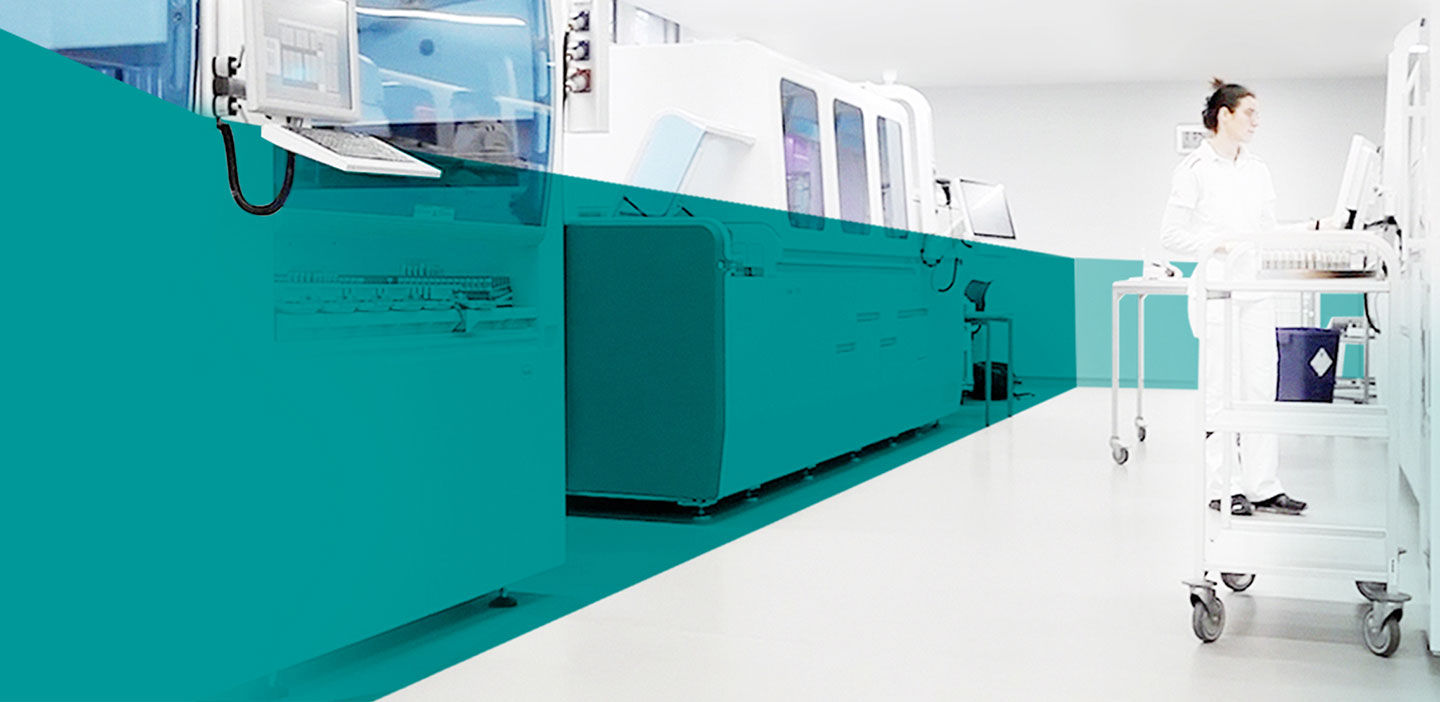How will the role of the laboratory change in the next few years? With widespread changes in healthcare already underway, learn how labs can overcome the considerable challenges and embrace the exciting opportunities.
The impact of technological advancement

Keeping pace with continuous technological advancements
Welcome to the digital transformation of healthcare
The ever-changing laboratory environment is a hallmark of the modern era. Staying relevant and competitive requires modern laboratories to adapt to changing demand, including increases in throughput, patient satisfaction and further optimization of outcomes. However, as pressure is mounting from within healthcare itself, the influence coming from the outside poses the greatest risk.
Want to know more?
Get exclusive insights and information from real labs
Hear Terry Carroll’s take on the next big disruptions in the market space
How new players are impacting traditional providers
More and more, non-healthcare companies are entering the healthcare system and presenting potential challenges for traditional providers. Should they succeed, there is no telling how many others will look to emulate this model. What does this all mean? That the distinctions between employers, payers, providers, and healthcare-related retailers are becoming more blurred by the week.
I think the biggest challenge in healthcare today is to recognize all the disruptions that are going on in the market space.
Terry Carroll Chief Digital Officer of the SPRING Network
As major healthcare companies push new innovations, and as large technology and consulting firms introduce their working models, patient population management may be impacted. It is a fundamental shift.
The multiple drivers of change
As healthcare companies seek economies of scale, consumers are seeking convenience. Our increasingly “on demand" economy is moving many aspects of medical care toward commodity status. Today, people want convenience and that is going to influence how the industry as a whole operates. The prospect of innovations like telemedicine and virtual care providers could even shift how people look at traditional care.
Additionally, the technological sophistication of players like Amazon will present challenges for traditional providers who aren't used to operating in a 24/7, on-demand environment.
Learning a lesson from retail
Putting these concerns aside, things could be worse. It took retailers 30 to 40 years to develop an appropriate technology infrastructure—point of sale inventory management systems, bar-coding, electronic commerce—while healthcare providers have been installing equivalent systems rapidly over the past decade.
Modern-day medical records, for instance, are relatively new. With this infrastructure in place, the next step may well be a shift toward consumerism, and quickly thereafter, virtual care. While this follows a very similar transition to the retail example, it will likely happen much faster in healthcare.
Enter, the “digital natives”
It is essential for labs to be ready to think in different paradigms as their organizations face these new players, whether they turn out to be competitors or partners.
A lab may have to adopt unfamiliar technologies, do battle to maintain its position against a new retail lab company, or develop special services as part of an employee health monitoring program for a large employer. One bright spot is that the next generation workforce—both technology developers and healthcare providers—are “digital natives". Bringing a fundamentally different approach to problem-solving, this group has the potential to shift the way health and healthcare is delivered.
Lab leaders must be prepared to participate in integrating multiple data sources to answer key questions about the value of their services—from ‘what was the effect of having that test performed?’ to ‘did it keep the patient out of the specialty office or reduce length of stay?’ These types of questions can only be answered by combining multiple sources of data, from the lab itself, from the EHR, from administrative systems, and insurance claims.
